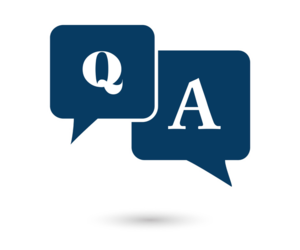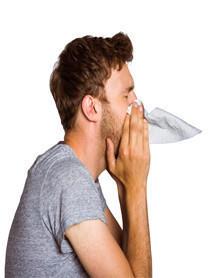“What activities to avoid after a bronchoscopy?”
I will have a bronchoscopy. What activities to avoid after a bronchoscopy?
3 Answers
Surgeonsurgeon
These are specified by the specialist, but they may include avoidance of eating and a brief period of rest prior to ambulation.
After a bronchoscopy, it's essential to take some precautions and avoid certain activities to minimize the risk of complications and ensure a smooth recovery. Here are some general guidelines on what activities to avoid following a bronchoscopy:
1. **Rest**: Rest is crucial in the immediate hours after a bronchoscopy. You may feel drowsy from the anesthesia or sedation used during the procedure. It's best to rest and recover during this time.
2. **No Driving**: You should not drive or operate heavy machinery for at least 24 hours after the procedure, especially if you received sedation. Arrange for someone to drive you home after the bronchoscopy.
3. **Avoid Strenuous Activities**: In the first 24 to 48 hours after the procedure, avoid strenuous physical activities, including heavy lifting, vigorous exercise, and activities that require significant exertion.
4. **Avoid Hot Liquids**: It's generally a good idea to avoid very hot liquids or foods for a few hours after the bronchoscopy to prevent burns to your throat and airways.
5. **No Alcohol**: Avoid alcohol consumption for at least 24 hours after the procedure, as it can interact with any residual effects of sedation.
6. **Avoid Smoking**: If you are a smoker, refrain from smoking for at least 24 hours after the bronchoscopy, and ideally longer. Smoking can irritate your airways and slow down the healing process.
7. **Soft Diet**: Initially, stick to a soft diet to reduce the risk of irritation to the throat and airways. Opt for foods like soups, yogurt, pudding, and mashed potatoes.
8. **Stay Hydrated**: Drink plenty of fluids to stay hydrated, as this can help prevent throat irritation and promote healing.
9. **Follow Medical Instructions**: Your healthcare provider will provide specific post-procedure instructions. It's essential to follow these instructions closely, including taking any prescribed medications as directed.
10. **Monitor for Complications**: Keep an eye out for any signs of complications, such as fever, severe chest pain, increasing shortness of breath, or excessive bleeding. If you experience any concerning symptoms, contact your healthcare provider promptly.
11. **Return to Normal Activities Gradually**: After the initial recovery period, gradually return to your regular activities as you feel comfortable. Your healthcare provider will provide guidance on when it's safe to resume more strenuous activities.
It's important to note that recovery from a bronchoscopy can vary from person to person, depending on the specific reason for the procedure and individual factors. Always follow the instructions provided by your healthcare team and consult with them if you have any questions or concerns about your recovery and activity limitations.
1. **Rest**: Rest is crucial in the immediate hours after a bronchoscopy. You may feel drowsy from the anesthesia or sedation used during the procedure. It's best to rest and recover during this time.
2. **No Driving**: You should not drive or operate heavy machinery for at least 24 hours after the procedure, especially if you received sedation. Arrange for someone to drive you home after the bronchoscopy.
3. **Avoid Strenuous Activities**: In the first 24 to 48 hours after the procedure, avoid strenuous physical activities, including heavy lifting, vigorous exercise, and activities that require significant exertion.
4. **Avoid Hot Liquids**: It's generally a good idea to avoid very hot liquids or foods for a few hours after the bronchoscopy to prevent burns to your throat and airways.
5. **No Alcohol**: Avoid alcohol consumption for at least 24 hours after the procedure, as it can interact with any residual effects of sedation.
6. **Avoid Smoking**: If you are a smoker, refrain from smoking for at least 24 hours after the bronchoscopy, and ideally longer. Smoking can irritate your airways and slow down the healing process.
7. **Soft Diet**: Initially, stick to a soft diet to reduce the risk of irritation to the throat and airways. Opt for foods like soups, yogurt, pudding, and mashed potatoes.
8. **Stay Hydrated**: Drink plenty of fluids to stay hydrated, as this can help prevent throat irritation and promote healing.
9. **Follow Medical Instructions**: Your healthcare provider will provide specific post-procedure instructions. It's essential to follow these instructions closely, including taking any prescribed medications as directed.
10. **Monitor for Complications**: Keep an eye out for any signs of complications, such as fever, severe chest pain, increasing shortness of breath, or excessive bleeding. If you experience any concerning symptoms, contact your healthcare provider promptly.
11. **Return to Normal Activities Gradually**: After the initial recovery period, gradually return to your regular activities as you feel comfortable. Your healthcare provider will provide guidance on when it's safe to resume more strenuous activities.
It's important to note that recovery from a bronchoscopy can vary from person to person, depending on the specific reason for the procedure and individual factors. Always follow the instructions provided by your healthcare team and consult with them if you have any questions or concerns about your recovery and activity limitations.



